How to Learn Any Language for Travel Fast with 6 Essential Resources
“If you talk to a man in a language he understands, that goes to his head. If you talk to him in his language, that goes to his heart” ~ Nelson Mandela.
Are you wondering how to learn a language for travel purposes? Or even read a foreign alphabet? During my travels to over 30 countries I can admit I’ve had so many positive encounters with locals solely because I’ve learnt the language basics of my destination. I’ve written this article because I highly encourage you to do so, too!
You may have guessed from the name of this blog that as an invisible tourist, I’m very passionate about “blending in” as best as possible when abroad. This includes learning the local customs, etiquette, what to expect and of course, language to avoid looking like a tourist.
Learning some language basics of your destination has many benefits, from being immensely helpful for reading signage to knowing what local foods to order (or avoid) when eating out.
In my home country of Australia, our primary and official language is English. We learn some foreign language basics at school but that’s as far as most people get. I’m certainly not a fluent polyglot (although I really wish I were) but by using the below resources, I’ve been able to teach myself the basics of Japanese, French, Spanish, Italian, Greek and Russian.
Get ready for me to spill my secrets! Below I reveal the 6 essential resources I use to learn language for my travels and how you can, too. Read on for more!
This guide to learning language for travel will cover:
|
This post contains some affiliate links, at no extra cost to you. I may earn a small commission if you click through and make a purchase.

Why bother learning a language for travel?
With tonnes of different resources available it’s never been easier to begin learning a language for travel by teaching yourself. The best news is you don’t have to be totally fluent. On the contrary, far from it (thank goodness, right?)
Firstly, I’ll give you a little backstory as to why I’m so passionate about learning language for travel.
My first visit to France many moons ago, I was linguistically unprepared. I’d barely learnt French beforehand but had learnt a little Spanish. And it showed. I kept getting the words confused (because Spanish and French share many similar words) and it resulted in a hostile reception from many locals I encountered… Oops!
You can see why the French have a reputation for being rude… Wait. Was it them, or was it something I was doing? I can tell you it was definitely all me.
It was a completely negative experience and it drew attention to the fact I was a tourist. I may as well have had a flashing neon sign on my forehead. Noooo, the last thing I wanted was to fall into one of these traveller stereotypes! So when I revisited France a year later, I was determined to learn as much French as possible so I could be an invisible tourist this time.
It seriously made all the difference and since then I’ve learnt languages for almost every country I have visited (and even ones I haven’t but plan to someday). It’s easier than you think so let’s get into the benefits.

Benefits of learning language for travel
I’ve learnt some of these the hard way so you don’t have to! There are loads of benefits of learning a language for travel, but in a nutshell these are:
- Won’t look like a lost tourist: If you can read signage in a foreign language you won’t need to ask for as many directions when you’re getting around. Looking like you know where you’re going means you won’t draw unwanted attention to yourself, and you’ll be able to get to your destination more efficiently.
- Eating out: It’s super handy for knowing what to order when you’re perusing a menu and inspecting the bill (check) at the conclusion of your meal. If you have allergies or have a particular diet, you’ll also know what foods to avoid.
- Reading the alphabet: When English menus aren’t available, it can be helpful just to read the alphabet of your target language. For instance when I was in Athens, I couldn’t completely read a menu in Greek but by sounding out the words, I could make out what some were. Turns out καλαμάρι aloud spells calamari!
- Similar languages: If you learn one language, it may be helpful with another similar one you haven’t fully learnt. For instance, when I went to a dry cleaner in Madrid, I had forgotten the Spanish word for “cold” (frío) but remembered the French word for it (froid). The lady quickly understood what I wanted, which was a cold wash only.
- Won’t sound like a clueless tourist: Taxi drivers are less likely to rip you off if you greet them in their native tongue. I know this from personal experience, haha.
- Positive reception: You’ll get a much warmer reception from locals if you can greet, farewell and speak a few basic phrases of their language. I can’t stress this enough!
- Personable experiences: Finally, you’ll feel all warm and fuzzy knowing you warmed someone else’s heart purely because you spoke their language. You’ll earn the highest level of respect from locals, which results in positive travel experiences.
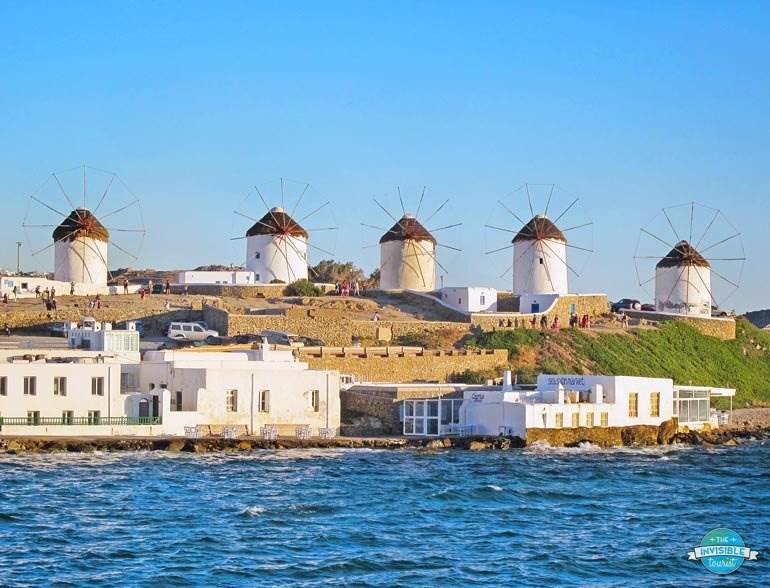

How to learn a language for travel purposes
By combining techniques from both free and paid resources, you’ll soon find your language learning groove. I’ll explain some options in detail below. The trick is to learn enough of the language so you can ask for help if you need it and tell locals a little about yourself whilst on your adventure.
I strongly recommend learning a few essential phrases (and possible responses) of your target language as a bare minimum to get you by. This has worked wonders for me!
Essential phrases to learn
You don’t need to spend years becoming fluent. Just learn the words and phrases you’ll need — forget learning the rest if you prefer. Your main focus should be:
- Greetings: Saying hello, introducing yourself and what country you’re from
- Niceties: Words for please, thank you, good morning, good evening, you’re welcome
- Farewells: Saying goodbye, see you soon
- Eating out: Ordering food, drinks, asking for the bill (check)
- Retail: Clothes sizing, buying items with credit cards
- Asking where to find something: Toilets, points of interest, train platforms, restaurants
- Numbers: Not exactly phrases, but still helpful for shoe sizes, ordering quantities of something, etc
- What to say in an emergency: Help, stop, thief, etc.
Yes, that’s pretty much it. Hopefully, you’ll never need to use the last one but it’s useful to have up your sleeve!
How long it takes to learn the basics of a new language
It’s simple to become a basics pro within a few months or even weeks depending on how intense you want your learning journey to be. The best part is it’s entirely up to you.
Approaching a local speaking their language is like waving a golden ticket at them. How could they not want to help you if you show you’ve made the effort to learn about their native tongue? If you do this, 9 times out of 10 the local will be happy to speak in English if they can once they realise you’re a visitor, especially in Europe. It means they can practice their English and you’re off the hook — win-win!
If they can’t speak English you’ll have a funny conversation made up of hand gestures but at least you’ll be able to figure out the answer you needed and your exchange has been positive.
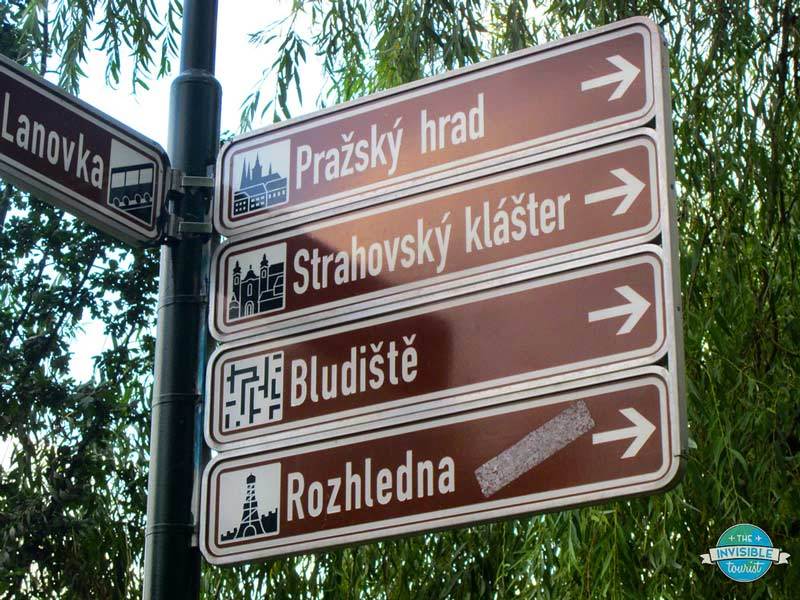

READ MORE:
Here’s How to NOT Look Like a Tourist in 10 Simple Steps
Solutions to Travel & Avoid Contributing to Overtourism Issues
Crucial Do’s and Don’ts in Japan to Know Before You Go
My Ultimate Resources for Travel on a Mid-Range Budget
Top paid resources to learn language for travel
Get your hands (and ears) onto some audio resources. Listening to the audio in the car or on the train during my daily commute to work helped me hear the correct pronunciation and speak with the correct accents.
You can read as much as you like to try and get the correct pronunciation, however nothing really beats hearing the words by a native speaker to help you learn. Listening will give you the confidence to know you’re pronouncing words correctly once you arrive at your destination.
For the record, this isn’t a sponsored post. I just genuinely want to share the resources that have worked well for me over the years! The paid resources I personally use and recommend are:
Lonely Planet Phrasebooks and Audio
With their strong reputation Lonely Planet is the industry leader when it comes to learning language for travel. Their phrasebooks cover almost every situation you’d expect when travelling and provide the phonetics of foreign words.
Compact and pocket-sized means they’re perfect for on the go so you can brush up on the plane before you get there (without having to rely on wifi)!
Below are some of my Lonely Planet phrasebooks, among others. Confession: You certainly don’t need this many but I have to admit each is useful in its own way.


Where to find Lonely Planet phrasebooks & audioClick here to purchase Lonely Planet Japanese Phrasebook + Audio |
Berlitz Phrasebooks and Audio
After using Lonely Planet phrasebooks exclusively for years I was introduced to Berlitz phrasebooks by a paid language course I took at my community college.
Although the content is very similar to Lonely Planet’s I found some of the Berlitz phrases were more simplified, which made them easier to say and remember. The phrasebooks are also compact and cover most travelling situations.
TIP: Specifically for Japanese – The Lonely Planet audio is useless for a beginner. The native speaks the Japanese phrases so fast and it’s very difficult for a beginner to determine what’s been said. Berlitz audio is a much better alternative, so I’d highly suggest Berlitz.
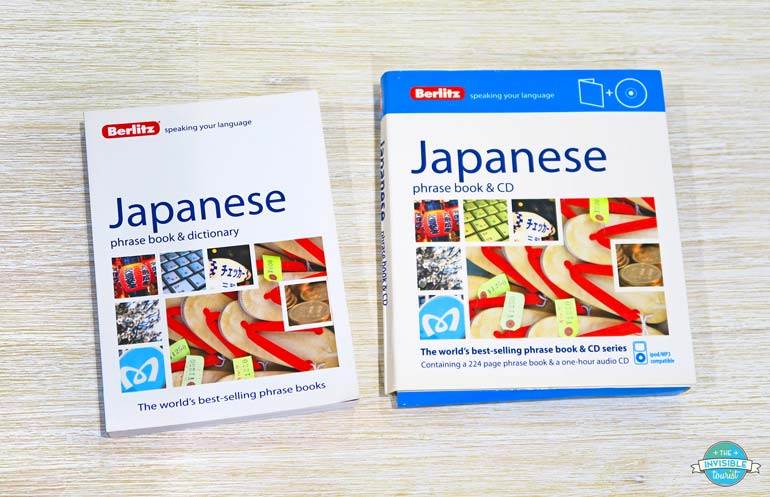
Where to find Berlitz phrasebooks & audioClick here to purchase Berlitz Japanese Phrasebook + Audio |
BONUS: 50 Coffee Breaks
Once you’ve mastered the basics, you can accelerate your French, Italian, Spanish and German language learning with the Coffee Break Languages series. The idea is to build upon what you already know with 5, 10 or 15 minute exercises with your daily cup of coffee.
Targeted at learners who have had some exposure the the languages before (advanced beginners – intermediate, levels A2-B1), the series will help you expand your vocabulary, improve grammar, learn idioms, enjoy short translation challenges, and better develop your knowledge of numbers. It’s a great way to break past the “hello’s,” “thank you’s” and memorised phrases!
I found the most interesting parts were the “Taste Bud Tantaliser” sections, where the exercise lists a recipe from the local cuisine. It’s fun learning words for the ingredients and decoding the method from the target language back to English.
The books include plenty of blank spaces to jot down your answers. And don’t worry, the answers are included at the end of each chapter so you can double-check your progress! Available in paperback and for Kindle.
Where to find Coffee Break Languages50 French Coffee Breaks |
With thanks to Hachette UK for gifting me this fantastic series!
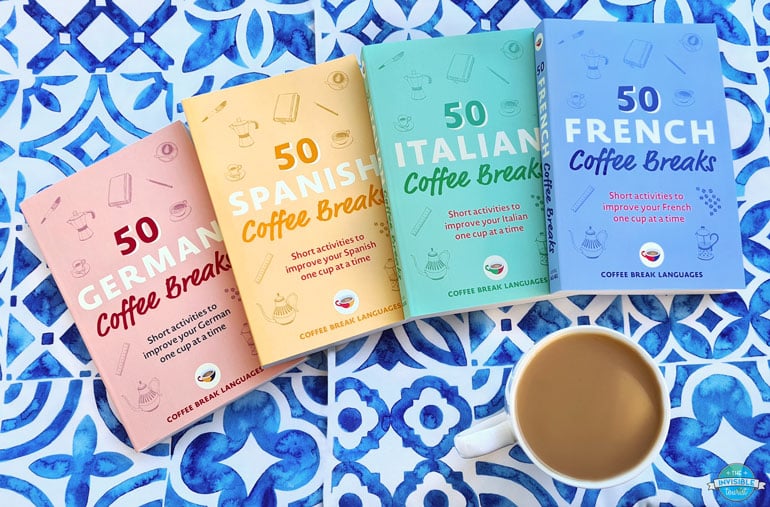
Language for Travellers Courses
Your local university is likely to have short language courses designed specifically for travellers. Community colleges providing evening courses are also a great way to learn language for travel, they usually run for a term. You’ll get to meet other people heading to the same destination as you and it’s easy to attend classes after work.
It’s also great to have a teacher to answer any specific questions you may have. I found it helpful having an expert there to answer my questions about grammar and let me in on some colloquial local lingo.
You may even be introduced to new language books you may not have considered before (like I was). Sometimes it’s helpful to step outside your comfort zone and try new things!

Top FREE Resources: Language learning apps for travel
Obviously, there are more apps out there than I suggest below. I have been using these three language learning apps for travel for the last 6-12 years and find they work best for me. However, it’s a good idea to branch out and find the ones that will work for you. These are some ideas to get you started:
Memrise
Memrise is an amazing little program that has courses based on user-content. It’s a unique way of learning because it’s fully personalised to you. It uses memes to help remember words or phrases of your target language. Yes, seriously! It really does make learning fun because it’s so customised.
I found this invaluable to learning the Japanese alphabets Hiragana and Katakana. If you’re a visual learner like me you’ll find it’s a very effective way to remember all the symbols and sounds! It’s available as a smartphone app and also desktop version.

Duolingo
Duolingo drops you in the deep end, so to speak. It uses images of the words to introduce you steadily. But then the questions are made up of an entire sentence in the new language. You gradually learn through repetition as you go.
In saying that, sometimes Duolingo will have an easier phrase to remember than the ones featured in the Memrise courses or printed phrasebooks, so it’s good to use both. It helps to reinforce the phrases you learnt from Memrise and allows you to choose a phrase that works best for you.
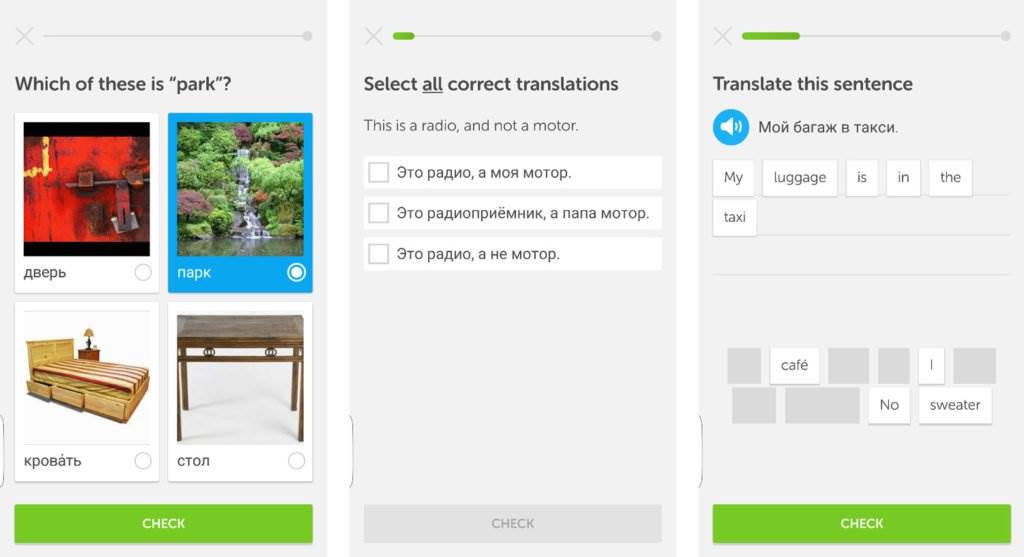
Pinterest is a virtual “pinboard” that doubles as a search engine so you can explore thousands of “cheat sheets” and save them for easy reference later. It’s loaded with handy images and infographics, which are awesome for learning the basic phrases of your target language in a visual way. You can find more info and ideas here.

BONUS: Japanese Cheat Sheet
Do you happen to be planning a trip to Japan? I’ve created a completely FREE downloadable PDF cheat sheet to help you learn all the basics you’ll need during your trip!
Head on over to my Japanese for Tourists article to learn basics of pronunciation, the must-know phrases for getting around Japan and specific resources to help you learn Japanese in no time.

Concluding learning a language for travel
Learning a little bit of a language is better than not learning any at all. If you can master some basic phrases and the possible responses, there’s no need to spend years studying to become fluent. Think of this as a little shortcut!
Our brains are all wired differently so what works well for one person may not suit someone else. That’s why it’s ideal to try several different resources to help you learn a language for travel. It will allow you to find a learning method that best suits you, and hopefully engrain the necessary phases and words into your brain so you’ll be good to go.
TIP: If you’re new here, I’ve shared many of my personal travel guides, itineraries and more on my travel blog. They’re tailored specifically to help you NOT look like a tourist during your trip by venturing off the beaten path, enjoying cultural experiences, understanding significance of popular attractions, how to avoid crowds and so much more.
Where are you headed? See if I’ve written a guide just for you on my Destinations Page and maybe during your travels you’ll even be mistaken for a local in true invisible tourist style!
I hope I’ve managed to inspire to you to take up learning a new language! Do you have any tips for quickly learning a language to get you by during your travels? I’m always on the hunt for new ways of learning so if there’s a resource you’ve used and isn’t mentioned here, I’d love to hear about it. Let me know in the comments below, over on Facebook, Instagram or Pinterest. Happy language learning!
Like it? Pin it! 📌

This article is not sponsored, but does contain some affiliate links. These come at no extra cost to you. I may earn a small commission if you decide to make a purchase and if you do, thanks for your support! This goes towards the cost of running my blog so I can keep my content free for you. As always, I will only recommend products and services I genuinely love and use myself!




Thank you for these articles! (plural because this is the fifth one I’ve read since finding your blog) My family and I are about to go on a trip to Japan and I am trying to learn some of the language to help us get around – the discovery of your cheat sheet was what brought me here, but now I am very intrigued with being an invisible tourist too. My husband and I have been travelers since we started dating and always liked to explore on our own, kind of invisible! We are now beginning to introduce our kids to our love of world travel, I’d love for them to grow up with this mindset too!
Thanks so much for your lovely comments, Ash! I’m so glad to have you here.
That’s wonderful you’re also beginning to teach your children this mindset with travelling, that’s the ultimate compliment for me 🥰
Wishing you and your family all the best for a wonderful time in Japan, happy and safe travels!
That’s a great lot of tips, this article will really provide some help to all the travellers like me who want to learn different languages. Thanks !
So glad you found it helpful!
Hi Alyse,
Many thanks for sharing these tips for learning a language for travel. I’m planning a trip to Istanbul, Brussels and Paris next year and this is just what I need to prepare for the trip. Thankfully, I already speak Dutch so I can survive in Brussels. All I have to learn now is French and Turkish😅!
Hi Nikkie,
I’m so glad you found these tips useful. Sounds like you have some amazing adventures ahead, how exciting! Best of luck learning French and Turkish, I hope you have a wonderful trip! Thanks for your comment 🙂